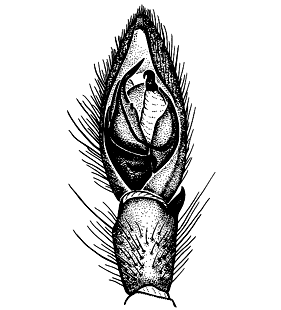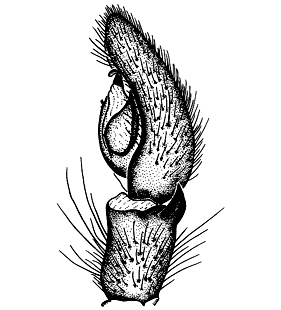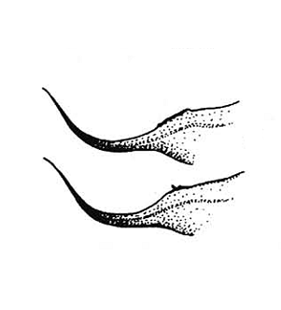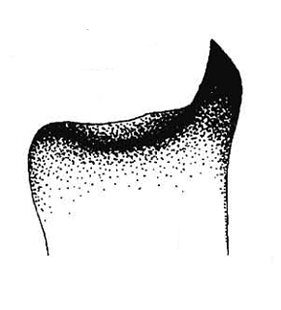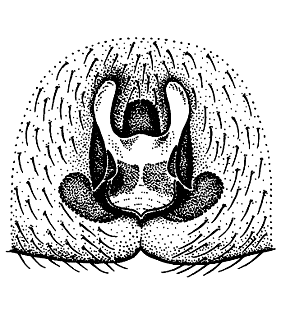Gnaphosa saurica Ovtsharenko, Platnick & Song, 1992
Beschreibung
Embolus schmal, mit einem Doppelhöcker. Bulbus mit schmaler Medianapophyse. Retrolaterale Tibialapophyse mit parallelen Seiten. Epigyne mit schmaler Haube und breitem Mittelteil
Körperlänge Männchen: 6.6-8.7 mmKörperlänge Weibchen: 6.6-8.7 mm
Zusätzliche Informationen
N.B.: Nach Levy (1995) zeigen die Abbildungen des Weibchens in Ovtsharenko et al. (1992) Gnaphosa dolosa (= Gnaphosa barroisi)
Verbreitung
Abbildungen
Verbreitungsnachweise
"No reference" bedeutet nicht, dass die Art in diesem Land nicht vorkommt, sondern dass wir die Referenz hierfür noch nicht eingefügt haben. Wir arbeiten daran.
Literatur
Esyunin S L, Efimik V E (1997) Remarks on the Ural spider fauna, 6. New data on the taxonomy and faunistics of gnaphosid spiders of the south Urals (Arachnida Aranei Gnaphosidae). Arthropoda Selecta 5(3/4): 105-111 ![]()
Otto S (2022) Caucasian spiders. A faunistic database on the spiders of the Caucasus Ecoregion. Database version 02.2022. Internet: caucasus-spiders.info.
Ovtsharenko V I, Platnick N I, Song D X (1992) A review of the North Asian ground spiders of the genus Gnaphosa (Araneae, Gnaphosidae). Bulletin of the American Museum of Natural History 212: 1-88 ![]()
Polchaninova N, Prokopenko E (2019) An updated checklist of spiders (Arachnida: Araneae) of Left-Bank Ukraine. Arachnologische Mitteilungen 57: 60-64 & App ![]()
Ponomarev A V (2022) Spiders (Arachnida: Araneae) of the southeast of the Russian Plain: catalogue, the fauna specific features. SSC RAS Publishers, Rostov-on-Don, 640 pp. ![]()
Tuneva T K, Esyunin S L (2003a) A review of the Gnaphosidae fauna of the Urals (Aranei), 3. New species and new records, chiefly from the south Urals. Arthropoda Selecta 11: 223-234 ![]()
WSC (2025) World Spider Catalog. Version 26. Natural History Museum Bern, online at http://wsc.nmbe.ch (28.2.2025) doi: 10.24436/2 ![]()
